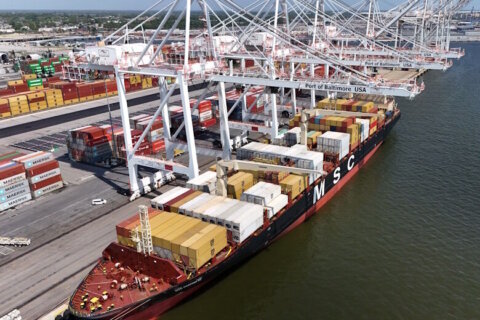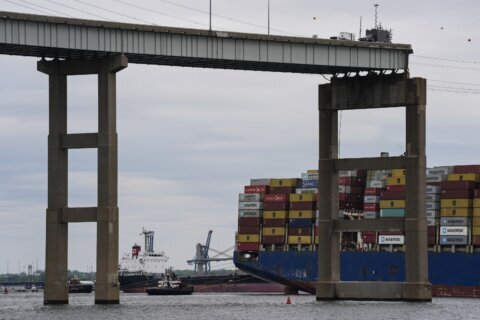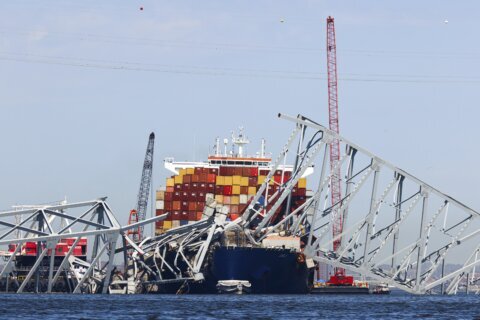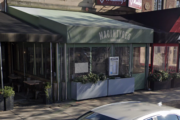As investigations into the collapse of the Francis Scott Key Bridge in Baltimore continue, including one launched by the FBI on Monday, so do the cleanup efforts. Hundreds of personnel are working around the clock to clear out large fragments of steel and concrete.
Once debris is pulled out of the Patapsco River, it’s ferried over by barge to Sparrows Point, where giant shears and crews wielding torches cut the hundreds of tons of large pieces into manageable fragments.
“It’s a remarkably complex project that we’re working,” said U.S. Coast Guard Commander Sharon Russell, the deputy incident commander for the Key Bridge Unified Command. “We have over 300 responders working on this, and we’ve had no injuries to date.”
The process starts with divers in the water.
“The diving aspect in the very beginning was extremely important because we had to know what it looked like under the water before we can actually come up with further planning on how to get it safely out of the water,” Robyn Bianchi, assistant salvage master with Donjon Marine, told reporters.
As the tide comes in and goes out, it stirs the mud on the river floor, making it difficult for divers to see as they survey where to cut the bridge.
“There’s a lot of debris. There’s rebar, there’s concrete, and a lot of the times for first dives we don’t know what dangers are down there. So we have to be very methodical and slow with that,” she said.
More on the Baltimore Key Bridge collapse
- The latest on the Key Bridge collapse and recovery in Baltimore
- Interview with Army Corps of Engineers official on front line of Baltimore Key Bridge recovery
- FBI launches criminal investigation into Baltimore bridge collapse
On top of that, divers use what is called an umbilical, which feeds air to the divers’ helmets. Constant checks are required to make sure that cord is not fouled or cut off by the wreckage.
Once divers find a spot, equipment, such as cutting torches and underwater diamond saws, are lowered to make cuts into the wreckage that will be lifted onto barges by the 100-ton crane and sent to Sparrows Point.
The Chesapeake 1000 crane barge had its largest lift of steel Monday, pulling an estimated 450-ton piece of steel truss out of the river.
Jim Harkness, chief engineer with the Maryland Transportation Authority, said it will take crews about a day to a day-and-a-half to further cut up that part of the bridge.
“We are over 1,000 tons of steel removed as of today … I think we’ve brought in six pieces,” Harkness said.
He said they are now working with local businesses to recycle those steel pieces.
Though it is a long and arduous process, Harkness said they are still on schedule “to open up the 35-foot channel by the end of April and the full channel by the end of May.”
To date, Unified Command and cleanup personnel have been able to coordinate 81 transits on 31 ships into and out of the port using two temporary, alternate low-draft channels.
Get breaking news and daily headlines delivered to your email inbox by signing up here.
© 2024 WTOP. All Rights Reserved. This website is not intended for users located within the European Economic Area.








